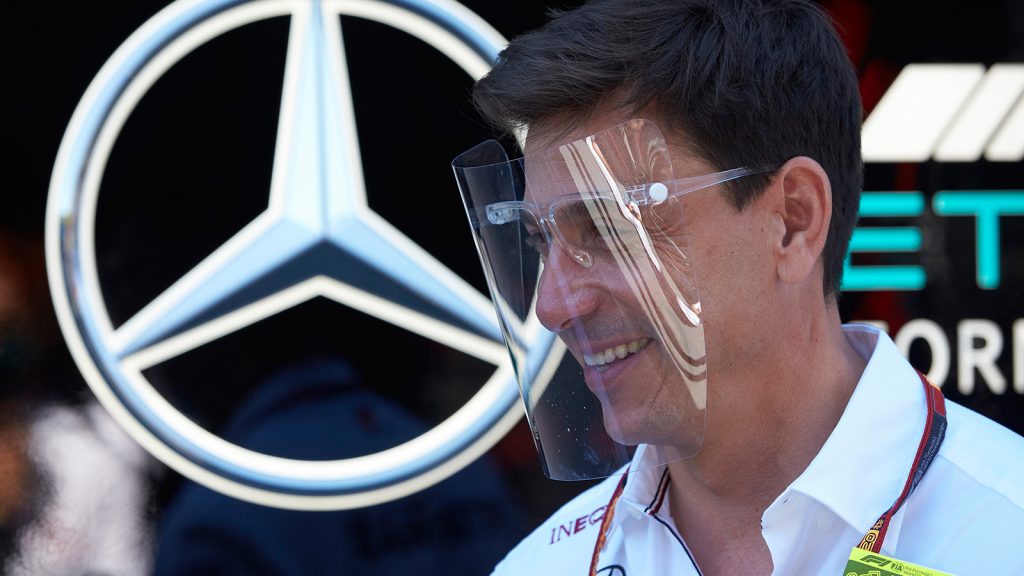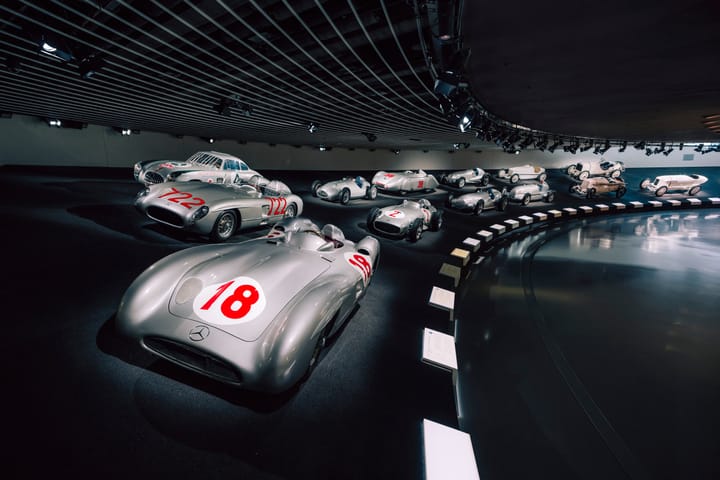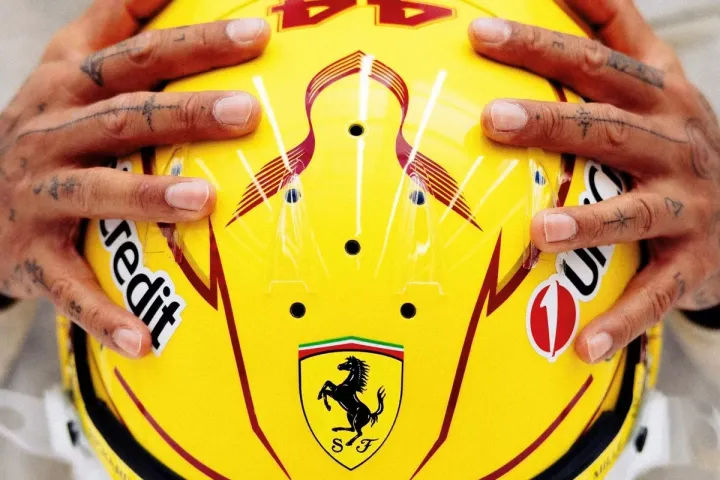Inside F1 During COVID

When I am in Austria, I stay at the Gasthaus Kaufmann in a little village named after the church, not far from the Red Bull Ring.
It is run by an old fellow who doesn’t speak English but has all the walls adorned with guests of old (or rather photos of them), including many racing stars.
He tells stories about his adventures and how he waved the chequered flag at the first Austrian Grand Prix at what was then called the Osterreichring.
His pride and joy is a photograph of Britain’s Princess Anne, who – astonishingly – stayed at the Gasthaus Kaufmann while attending an Austrian GP as a guest of Sir Jackie Stewart. You could have knocked me down with a feather when I saw the picture. This is not the kind of place once bumps into princesses.
The truth is that this part of Styria does not have much fancy accommodation. You have to drive 45 miles to Graz every day if you cannot get into the few Red Bull-owned places around the track.
If you work late at night over a Grand Prix weekend, the drive to Graz is pretty daunting both morning and night and so the little guesthouses do a roaring trade.
When I came here in the 1980s for touring car races, they hadn’t built the motorway and one lodged with families in rooms where they had photos on the walls of their fathers and uncles all dressed in very natty military uniforms. It was all rather odd.
The race is a big boost for the local economy because, while journalists are always writing about the race taking place in The Sound of Music country, the reality is that all that is 100 miles to the west, in the Salzkammergut, and in Styria there is very little tourism. It is farming country and so the Grand Prix is a nice little earner for Herr Kaufmann.
The sad truth in 2020 was that I was the only person staying there. This is the human side of the economics of Formula 1. No people equals no revenue.
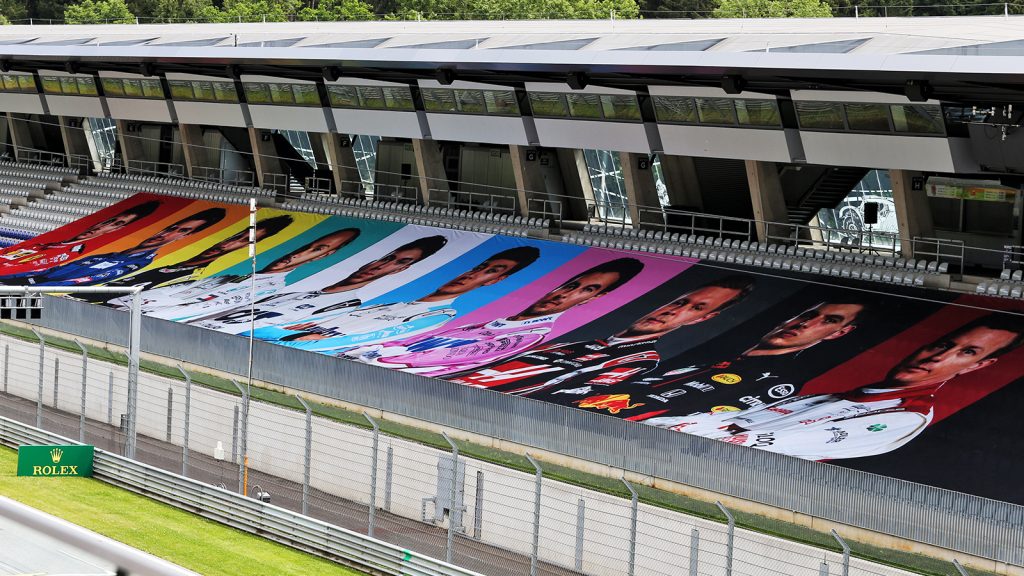
The FIA had explained in advance that the written media would have no access to the paddock and no-one from the paddock would come to visit us. It would all be done with Zoom conferences, audio files and dropboxes.
What that meant was that everyone was going to get exactly the same content, which included a little bit more than what was available for journalists working from home, but in the modern age once a story is out there, everyone has it so the advantage was minimal.
So there were 22 socially-distanced members of the F1 press corps (the number is usually around 300) and the same kind of number of photographers. Across the race track was the paddock and there was supposed to be no human interaction between the two “bubbles”, to make sure that none of those critter viruses could leap between us.
Outside, in the real world, life was going on as normal. The use of face masks is no longer deemed necessary in Styria (except perhaps for bank robbers) and outside the racing circuit I didn’t see a single mask being worn – by anyone.
The obvious conclusion was that F1 was suffering from a nasty dose of overkill, but then one must also consider the implications of getting things wrong, particularly after the troublesome events in Melbourne back in March, when F1 was ill-prepared for what was happening in the world.
And this is the important bit. F1 needed to prove that it can operate without impacting the host country.
Once that has been proved then other governments will be more confident that F1 is not a threat and the sport can get back to the business of building a calendar and just having to deal with the ebbs and flows of the virus in each location.
That will mean that, in time, we will be able to relax the rules of the F1 lockdown and not have to wear a mask at all times unless you are at your desk, and not have to walk around a one-way system to get to the loo to avoid head-on collisions with other journalists.
We even had one lift for going up to the press room and another for going down.
For those journalists who live in the media centre and make their living from what they are given this was not hugely different, but for the few who go out hunting in the paddock it created a problem. There could be no quiet chats between the trucks and motorhomes to find out what was really going on.
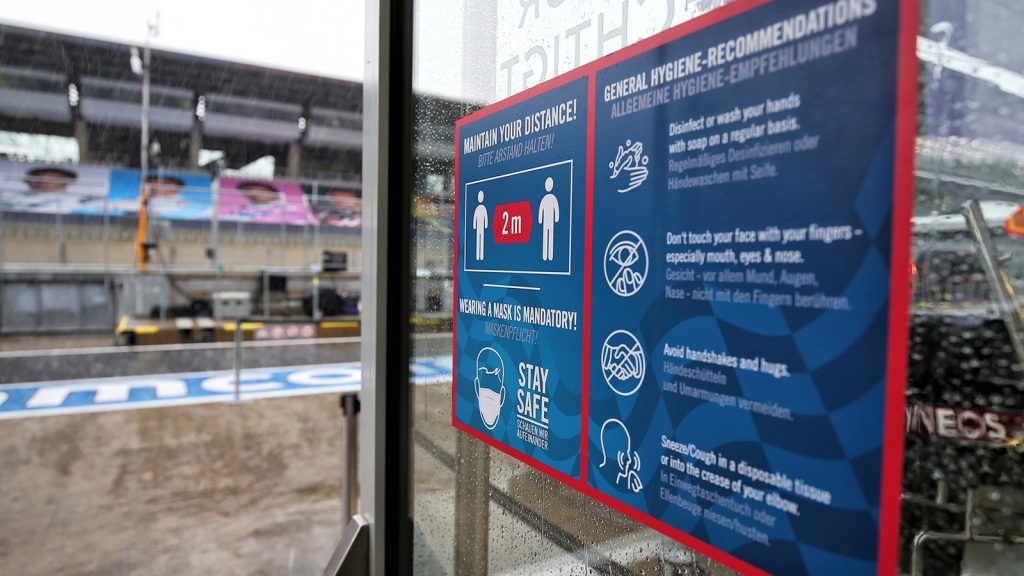
My Green Notebook is all about such conversations.
Still, I reached the conclusion that it was worth going, if only for the PR value of being one of The Few in Austria. There was a bunch of paperwork to get through to be there, and there were the unpleasant COVID-19 nose-jobs to undergo every five days, but it was simply a question of ploughing through the problems and getting things solved.
So they want an Austrian government form written in English, to be signed and rubber stamped by a French doctor within 24 hours of the first test? That was a challenge.
F1 is used to structure, a solid calendar, hotels and transport booked months in advance so living without a calendar is a bit of a logistical nightmare. How can one confirm a hotel room if one doesn’t know if one will be there, because F1 doesn’t know if it will be there, because the governments don’t know what will happen next.
After so many years on the road, I always drive to races when I can, and have been doing so for years. In a car you are in control of your own destiny and not at the mercy of airports and airlines that treat their customers like cattle and exist to make money. So the idea of driving 1300 kilometres to Austria and then going on to Hungary was not in the least bit daunting. In the world of COVID-19, being in a car on your own is the safest form of transport – which will be interesting in terms of car sales – as anti-car millennials are beginning to consider buying cars because they will feel safer in them, rather than using public transportation.
It never crossed my mind not to go. F1 is what I do for a living and if there is a race I am going to be there, unless someone tells me I cannot do it. In consequence I have quite a long unbroken run of F1 races behind me.
Someone asked me to look up the numbers the other day and I discovered that the unbroken run is now 552 GPs and, to save you the trouble, that means the last race I didn’t attend was Spain in 1988.
During the lockdown I discovered all my old diaries. It wasn’t ‘Dear Diary’ in style, but rather notes about travels, people I had dinner with and films I watched. This explained that I missed the Spanish GP because after the Portuguese GP I jumped on a plane to London and then flew out to Australia, to report at Bathurst. I then went ‘To Fiji’. I had been there the previous year, during their coup d’etat and decided to go back for my annual holiday. After that I went to Wellington, New Zealand for a street race there, and then flew to Japan the Japanese GP, and I have not missed a race since then.
People have asked me whether I considered the dangers of travelling across Europe to go to a motor race and to be quite honest I didn’t. It was a risk I was willing to take and, in any case, there are dangers everywhere, as I discovered during the lockdown when I jumped from a falling ladder and injured my wrist…
The first thing I noticed in the press room, apart from all the restrictions, was that many of my colleagues really needed a haircut. But what was also clear was that most of them had enjoyed the enforced break. If you have travelled almost non-stop for all your working life, the pleasures of being at home were quite a shock to the system and a lot of us found ourselves thinking about life – and what is important.
I think that this is the root of Lewis’s current campaign for racial equality and much else besides. Sergio Perez spoke eloquently about his lockdown experience.
“To be able to come down a bit, relax and live a bit more of a normal life was amazing,” he said. “It made me think a lot. There is such a beautiful life outside the sport.”
This appears to be something that Sebastian Vettel is considering as well, having to consider whether he wants to stay in F1 now that Ferrari has dumped him.
Conversations were different too. We talked about our vegetable gardens and things we had learned to do during lockdown be that book-binding or making sourdough bread. It was not like the F1 world at all. It was odd too because while the lockdown has forced us to be apart, it has drawn us together in many ways.
The Green Notebook wasn’t entirely empty because in among all the Zoom conferences there was some good stuff, and on the race track too there was plenty of action. And the mobile phone, with all its Apps, meant that one could still communicate with the people in the paddock, to some extent.
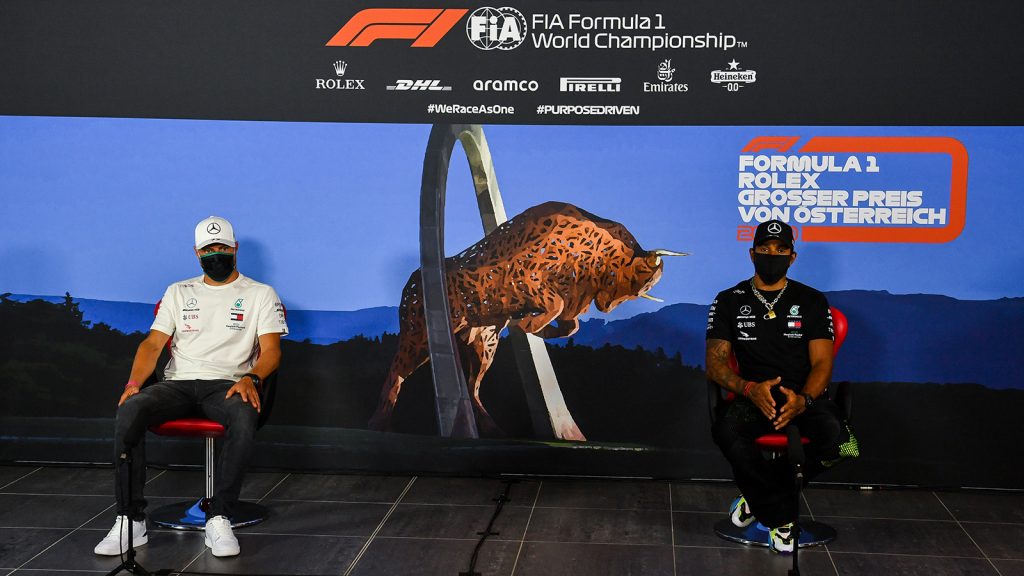
The odd thing, I thought, was that the focus in the reporting of Ferrari’s troubles focussed on the chassis upgrades, rather than on the engine. It was clear from all three Ferrari-engined teams that the changes made with the engine as a result of the end-of-season kerfuffles in 2019 and the subsequent secret deal with the FIA, that the Ferrari motors have lost some horsepower. But the difference is more dramatic than one would expect and it is hard to understand why that would be. For me the answer probably lies in heat transfer. Fuel is used as a coolant as it flows through parts of the engine, absorbing waste heat, which helps to pre-heat it before combustion. If there is less fuel flow there can be more heat build-up and engines can overheat. This means that to avoid problems the engines must be turned down, or kept low.
If one looks at the Q sessions from last weekend in Austria the changes between Q1 and Q3 suggested that overheating might be the problem for Ferrari. Charles Leclerc was the only Ferrari-engined driver with whom one can make a comparison with the Mercedes as Vettel didn’t make it to Q3.
In Q1 Hamilton and Leclerc were less than four-tenths apart. In Q2 that gap went out to a second, which was repeated in Q3. In other words, Ferrari cannot turn up its engines and may even have to turn them down more often in a race if heat build-up becomes critical.
And here is the problem. The engines are frozen for this year and next. One cannot change the architecture. So it is probably not a problem that can be fixed. Taking off aerodynamic downforce may help but it will make the cars more difficult to drive. Just a theory but it kinds of makes sense…
Elsewhere, the Formula 2 and Formula 3 races provided some excitement although I still hate the idea of reversing the top drivers on the grid for the second race because it means that the winners are not necessarily the best drivers – which is just wrong.
However, while the result in the first F2 race was great news for Callum Ilott, it was not really a true reflection of the pace seen. And for me there was a significant moment in qualifying when Guanyu Zhou put his UNI-Virtuosi car on pole by nearly half a second. There were then seven drivers within two-tenths of the second man.
Zhou’s effort is the kind of performance that turns heads and with him being the most senior of Renault’s young drivers, such a performance will be noted. In the race Zhou lost the lead briefly at the start but got back ahead. He then lost some time in the pit stops and got back ahead again and he seemed to be on his way to a dominant victory when he had some mechanical trouble. In the second race he was trying to pick up places when he was taken out avoiding someone else’s accident. He didn’t figure in the results at all, but a lot of folk noticed the performance.
Getting a competitive F1 driver from China is something of a Holy Grail for F1 marketers and could help the sport massively in the years ahead.
It remains to be seen if we get to China this year. I understand that the F1 group is pushing very hard for a race there, but the folks in Shanghai are keen not to upset the super-bosses in Beijing, which is never a good idea. We will have to see if it happens.
For the moment, at least, the plan remains to try to host 18 races, but in the knowledge that they may not all happen. It is anticipated that in a week or so there will be more dates which will almost certainly include Mugello, Sochi and Portimao (depending, of course, on the progress of the virus). There is still talk of Canada and of Vietnam. And there are Abu Dhabi and Bahrain at the end of the year, both of which can host two races if required to do so to reach the all-important target of 15 races. With another seven race in the next few weeks, F1 needs only seven more races and I am told is holding Hockenheim and Imola as back-ups if required, if the Americas and Asia prove to be too difficult to achieve. No-one will say anything on the record but there is still time and so we should expect to see only a tranche of new races announced, rather than the full calendar.
As there was not much to write about for the F1 media as a whole, much was made of whether or not the F1 drivers would “take a knee” or not.
It was clear that while no-one in F1 could be described as being racist, few are activists. Lewis Hamilton says that everyone should be more active. That’s fine, but one can also argue that “taking a knee” during the national anthem is a gesture that disrespects the host country and that what is basically an American form of protest is not necessarily right for other countries.
It is a matter that is really down to personal opinion and I think that the drivers all showed that they oppose racism by wearing the “End Racism” shirts, although not all of them wanted to express themselves as Hamilton was doing. Thus Antonio Giovinazzi, Daniil Kvyat, Charles Leclerc, Kimi Raikkonen, Carlos Sainz and Max Verstappen chose not to kneel and I do not think they should be criticised for that. They wore the shirts and supported Hamilton by doing so, but they also showed respect for Austria as well, which I think is important because the Austrians worked very hard to make the races at the Red Bull Ring happen.
I think, if anything, it showed that F1 drivers are not being told what their opinion should be…
There are worries about the eventual financial impact the virus will have in F1 and that affects everyone, not only the teams. Jean Todt said that the FIA will be impacted a little because it is heavily dependent on F1 for its revenues (I believe about 60 percent of the FIA’s money comes from F1) but he said also that the FIA has a set fee agreed for each year, rather than working with a percentage.
Todt did not mention the numbers but I believe that the FIA gets $US25 million a year to conduct 20 races and a $US 1 million more for each additional race. This means that with 22 races, the FIA budget had an additional $US2 million. This money will not now arrive.
In addition, with fewer races (although we don’t know how many as yet), teams and drivers will score fewer World Championship points and that means that there will be a second financial hit because the FIA gets $US 5000 per point from each Constructor (and I think $US6000 per point from the World Champions), while the drivers have to pay $US1000 a point for their licences.
If you crunch the numbers on the basis that there are 202 points available each race weekend (101 for drivers and 101 for teams), you come up with the fact that the FIA will lose $US631,000 for every race that doesn’t happen. Thus if we have only 15 races rather than 22, the FIA budget will have $US4.4 million less revenue than planned, plus $US2 million less in race fees. So that is an overall hit of $US6.4 million.
Todt says that the FIA will make a loss this year but added that the federation has sufficient reserves to be comfortable. He rather proved that point on Monday by announcing that the FIA Innovation Fund would donate $US1 million to F1’s new foundation, linked to the WeRaceAsOne programme.
It was interesting to note all the signage around the Red Bull Ring from Aramco, Saudi Arabia’s state-controlled oil company. We know that Saudi is pushing to be involved in F1 more and more, with plans for a Saudi Arabian Grand Prix as soon as a circuit can be built, but it makes me wonder if perhaps the Saudis might also want to get further involved by buying a stake in Liberty Media.
For those who watch the world’s business dealings, it has been clear in recent months that Saudi’s Public Investment Fund has been taking advantage of the economic upheavals to acquire shares in a string of companies, including Boeing, Facebook, Citigroup, Disney, Bank of America and even in Berkshire Hathaway. It also acquired a chunk of Liberty Media’s Live Nation. I cannot help but wonder whether they might want to buy a share of the F1 group. That would be a nice simple way for F1 to ensure its financial stability, allow Liberty to get some quick return on its investment, which is not doing as well as hoped, largely because of the pandemic, and to make sure that Saudi will have a little influence in F1 in the future. The country is looking to sport to build up international relationships and to help people to forget the more unsavoury parts of the country’s recent history.
I decided that as I was not being able to lurk amongst the trucks and ambush team bosses, I would try making contact with more of them by various means of an electronic nature. These days that sort of thing is not easy as they have found that life is easier when they don’t have to deal with journalists. This worked fine with some of them and I was able to talk with some but others enjoyed the opportunity to be difficult.
“We are enjoying the peace and quiet without you,” Toto Wolff replied. “Please go away!”
He sent me a cheery photograph of himself holding his mobile with my message and some happy emojis to show that it was all fun and games.
I replied that he was looking rather old… and I got exactly the reply I expected. I believe that doctors call it the digitus medius, which translates as the middle finger.
